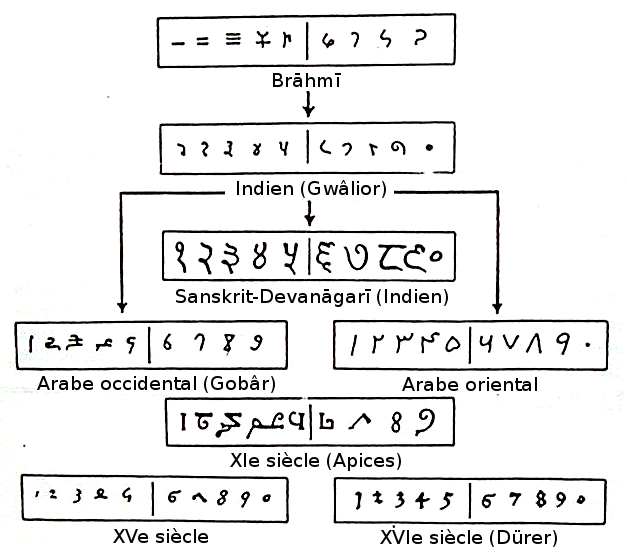Description
I've been doing extensive research about Arabic-Indic numerals and looks like we need to cover some of that background in ALReq. Here's a summary:
Common consensus in historic literature is that two variants of Arabic numerals were developed, both based on the Indic numeric system and Indic numerals. These two variants are usually called "Eastern Arabic Numerals" and "Western Arabic Numerals", and both are stabilized by the 800 C.E.
This chart demonstrates the common shapes for these two systems: https://en.wikipedia.org/wiki/File:Numeration-brahmi_fr.png
The Western Arabic Numerals—formed and used in Morocco and Spain, and used for centuries—were popularized by mathematics literature throughout Europe between 800 C.E. and 1200 C.E. and slowly evolved into European Numerals, which are encoded in Unicode as ASCII DIGITs. (See the same chart for other shapes formed during the evolution.)
The Eastern Arabic Numerals stayed stable in Eastern North Africa and Western Asia, which later evolved in two variations, which are encoded in Unicode as ARABIC-INDIC DIGITs and EXTENDED ARABIC-INDIC DIGITs.
IMHO, this history is very important in this context, because:
-
it explains why, still to this date, the European numerals are the preferred form in Morocco and the Western Arab area in general.
-
demonstrates that European numerals, as the modern shapes for Western Arabic numerals as also native to Arabic script.
Example:
What do you think?
Some References
The History of Mathematics, An Introduction, Burton
http://www.maths.sci.ku.ac.th/suchai/02731141/hmath2.pdf
The Story of Numbers, UNESCO
http://unesdoc.unesco.org/images/0009/000951/095141eo.pdf
Arabic Manuscripts: A Vademecum for Readers
https://books.google.ca/books?id=NeaHnLb6RdUC&printsec=frontcover#v=onepage&q&f=false
Numerical Notation in Africa, Andrij Rovenchak (Ivan Franko National University of Lviv, Ukraine)
https://www.afrikanistik-aegyptologie-online.de/archiv/2012/3553/
The History and Technique of Lettering, By Alexander Nesbitt

